Interview
Interview: Bianca Tschaikner
In conversation with Austrian artist Bianca Tschaikner.
The sketchbook is something you clearly use extensively, can you talk about where that interest came from?
Since my childhood, I’ve had lots of sketchbooks and notebooks, but many of them remained half empty – I loved starting them, but I often was too unfocussed to complete them.
Then I moved to Morocco for some time and I decided to finally finish a sketchbook there.
Then, I got robbed one night in the Marrakesh Express, and the thief also stole my sketchbook. He got nothing valuable, but my sketchbook, which was a great grievance for me, and to console myself, I decided to make an even better sketchbook than the one before.
I couldn’t find any suitable sketchbooks there and I ended up drawing a book that was actually an Arabic calendar, but I was really committed to it, trying to observe and capture what was happening around me in that weird and fascinating city I was living, Tangier, and this was the beginning of what I’m doing today, exploring the world with my sketchbook.
For me, sketchbooks are projects, I’m not a person who likes to keep a sketchbook all the time, but when I decide to make one, I am very dedicated to it and spend a lot of time with it and carry it around with me all the time, it’s pretty intense and it’s not something I could do all the time.
Can you describe ‘how’ you use a sketchbook? That is to say, is the sketchbook merely somewhere to record ideas or does it have another function, for example helping process and develop ideas?
I use sketchbooks in different, almost diametrical ways – I have ‘messy’ ones and ‘polished’ ones.
The ‘messy’ ones I usually use to write and to take notes, and I also doodle around in them a bit, because I always have to doodle when there is an empty page. The function of these is more to outsource my brain, but actually they are more notebooks than sketchbooks.
I don’t keep sketchbooks to develop ideas, they feel too narrow to me, I prefer to use loose sheets of paper or big note pads or where I can rip and cut out drawings and keep the good ones and throw away the bad ones. I am very productive and I am not someone who likes to keep every drawing I make.
Then I have what I would call the ‘polished’ sketchbooks, the ones I make when I travel, they are always Moleskines and I use micron ink pens for them.
It’s a special way of working, I sit somewhere, in a cafe or a mosque or a bazaar, and start to draw whatever comes to my mind, what is outside or inside, I fill the pages with text and images, I usually don’t have any fixed concept of the drawing, I just put the pen on the paper and watch the drawing unfold, images and words come to me during the process. I only have one take and somehow in these sketchbooks I rarely mess a page up, although I usually do mess up lots of drawings.
It’s a kind of meditative and a very intuitive process and for me, it’s a special and beautiful state of mind, I’m highly concentrated and at the same time deeply connected with my environment.
The first one of these I published was my book SAVARI, which was more like a diary for myself during a four months long journey through Iran and India. Throughout my journey, I met so many people who said: You must publish this!
And I did – this was a special journey and a special time of my life and the book contained so many precious memories, but I had made it only for myself, which meant that there were so many incredible stories hidden behind these drawings, and that’s when I started to make book presentations, so I could tell these stories.
Now, I make my sketchbooks a bit more with a reader in mind, and they have much more text than before, especially my last one which I made in West Sumatra, which is based on a pretty systematic and research on the Minangkabau culture, a which is a little less dreamy and spontaneous than my other sketchbooks but probably easier to understand.
Your work often looks at mythologies, rediscovered histories, and imagined worlds. Where does this interest come from, and what role do you play in this storytelling?
In FILLAS DE LA RIBA DAUGHTERS OF THE RIVER for example, you are part artist, part historian, and arguably part interpreter representing history scenarios.
Over the years, storytelling has become a more and more important part of my work.
I just collected so many stories over the years, so in the last years I’ve started to hold “storytelling evenings”, where I project my sketchbooks and other artworks inspired by journeys on the wall and tell the stories behind the images – it’s something I enjoy a lot, taking people on fantastic journeys, making them travel with my drawings.
I am interested in history, especially microhistory, ethnology, and mythology, but I am equally in the people I meet and the stories they tell me, snippets from their biographies or gossip or everyday stories, things happening on the street.
I really like to tell stories, and often I feel more like an explorer with a pen than like an artist – story and drawing have become interdependent. The story is an opportunity to make a drawing, and the drawing is an opportunity to tell a story. Generally, drawing is the base of my work, but I also like to expand the limits of drawing – like using a city as a three- dimensional map, like I did in Porto and Granada, or making a three-meter long drawing of a city, as I did in Udaipur, India.
In Fillas de la Riba, I painted doors in the Catalan village Riba-Roja, inspired by stories I found there. I was lucky enough to meet a man called Josep Aguilà there, who taught me a lot about the history of the village, but most importantly told me about the fascinating and touching story of his grandmother Teresa Aguilà, an exceptional personality and kind of local hero in Francoist Spain – for me, personal stories are a great way to tell about a place, it’s history and culture.
You have spoken previously of the idea the ‘artist being a medium’. Can you elaborate on what you mean by this and how you see yourself and your practice?
I like to see the artist more as a medium than as a creator, in the sense that things come through me, not from me. I like the idea of the creative process as a game of interaction instead of this great genius person generating great original ideas out of the void – the former just seems much more realistic.
For me, at least concerning what I do, an artwork emerges from interaction, from a collaboration with a place, with people, with circumstances, with everything around the artist, which includes everything inside the artist. Nobody is an island, and there is no way to tell where I end and where the outside world begins.
My sketchbooks, for example, are not only my creation, but, to a lesser extent, they are also the creation of everyone whose story I told, they are also the creation of the people who build the mosque I’m drawing, and so forth. Everything flows together at the point where the pen touches the paper, and the drawing is nothing but a revelation of this happening.
Of course I add the filter and the context and the style to these things, but essentially, it is the result of a collaboration, and I like to see it like that.
For the ancient Greeks, an artist was not a genius, he had a genius, which was understood to be a separate entity. And I like this idea of being some kind of servant of images that want to be expressed through you. Seeing yourself like this gives you a feeling of connectedness with the world, and at the same time, a lot of o freedom: It can help to get rid of your ego a little bit, which takes away a bit of pressure from your working process and gives more lightness and playfulness to the process of creation.
Travel clearly has an influence on your work. Where does this interest in observing different cultures come from, and what are the politics around this. Are you there to observe only, or is it more to do with immersing in that culture?
The place where I grew up in the Austrian Alps always felt narrow to me, and I always had wanderlust. I’ve always had this fascination with the world out there. What drives me to travel, and to tell stories about it, is, I guess, my fascination with the abundance of the world and what all exists there, the full human experience, and I want to share that in my books, that sense of wonder, of curiosity.
When I travel, I like to immerse myself completely, I always try to spend a long time at a place, without a return ticket if possible, taking myself a lot of time, being outside on the street a lot, and trying to soak up as much as possible. I like to stay long enough at a place for my story to become part of the story, I don’t only go somewhere to observe and draw, but I also document what happens to me in that particular place.
When I go to a place, I want to learn about it and get lost in it, I want to soak up things, I want to connect to the essence, the soul of that place. That’s the experience I search, and my sketchbooks are the documentation and the result of this experience, they are the documentation of what happens between me and a place.
My travel sketchbook is not only about observations, but also about connections and interactions, and what speaks in my sketchbooks is not only my voice, but the voice of many. I like it to be in a place where everything can be object and everything can be subject.
On the same page you might read things I hear and other things I think in my head, and you might not even be able to tell whose story I’m telling – a bit like the sensation when you’re wandering through an exotic market and there this mix of noises and images, you pick up snatches of conversations here and there and you smell things and you see things and there are so many impressions that they start to become blurred, this is the sensation I like to convey, not just this is this and that is that, but something of a more multidimensional, intangible nature, a bit like the way our perception and memory works.
I like to convey atmospheres, and I like the fragmental: In my sketchbook, you can find portraits of real people mixed with imaginary elements, snippets of conversations as well as daydreams and poems, gossip and recipes.
Your background in printmaking, how has that influenced your approach to your work? Do you see yourself as a printmaker, or is this to prescriptive?
I am a printmaker, but I also do lots of other things. Of course, everything I do also has an influence on other things I do, but I wouldn’t say that printmaking has had a particularly big influence on other kinds of work I do, it’s more the other way round.
For example before, I turned pages from my sketchbooks into elaborate etchings, but now I like to work my plates in a similar way I make my drawings, drawing directly on the plate and messing around a lot. As a printmaker, I’ve been pretty puristic for a long time, mostly using traditional techniques like aquatint, but lately, I’ve become really experimental, experimenting with stuff like big formats, monotypes, and golden ink and pigment.
For me, printmaking is something very special and something magic and once I’m in the studio it’s hard to get me out, but once I’m out I’m out and I enjoy sketching or writing just as much.
The labels “printmaker” or “illustrator” or “artist” are useful to explain to others what I do, and I use them interchangeably depending on the context, but I’m not particularly attached to any of these, I’m doing too many different things to identify too much with any of them.
What do you think using a sketchbook offers?
Well, I guess that I’m not the typical sketchbook user either. Most of the time, I don’t have a sketchbook because I don’t have the patience for it, I feel more free doodling on loose sheets of paper.
So I can only talk about sketchbooks as travel books, and the beautiful thing about it is that it documents your journey and at the same time is a place to reflect and deepen that experience and this of course is something you can apply to anything, not just to journeys.
It’s this thing that lives along with you on a journey, it grows with you, and you grow with it, and in the end, you have a beautiful souvenir.
And that’s what I generally like about sketchbooks that in the end, you have a beautiful book from a phase of your life and work, you have something with a beginning and an end, you’ve created a small world, a universe to get lost in afterward, or for other people to get lost in.
If a drawing is a gem, a sketchbook is a treasure chest, and I really see it like that, like a treasure chest – I also love sketchbooks of other artists, because I feel it is, in its directness and rawness, the most essential and most authentic part of their work, and for me, this is the kind of art that speaks to me the most.
And I just love books as objects, I don’t only make sketchbooks but also artist books and picture books and sometimes illustrate books for other people – I just love making books.

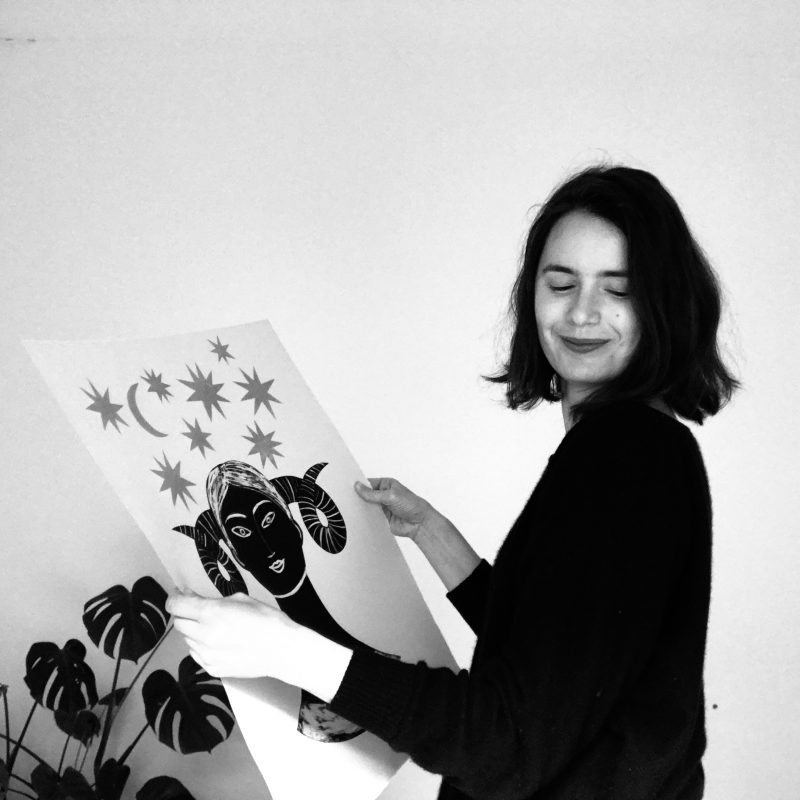
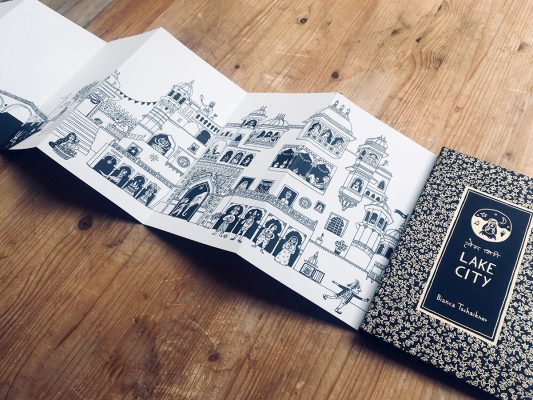
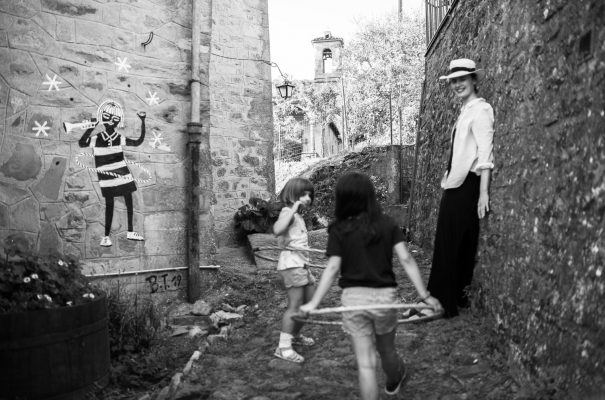
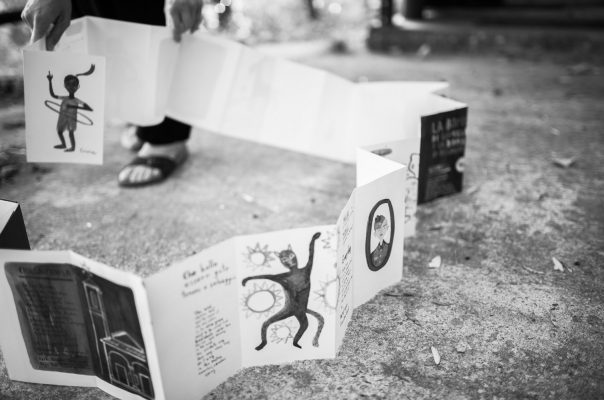
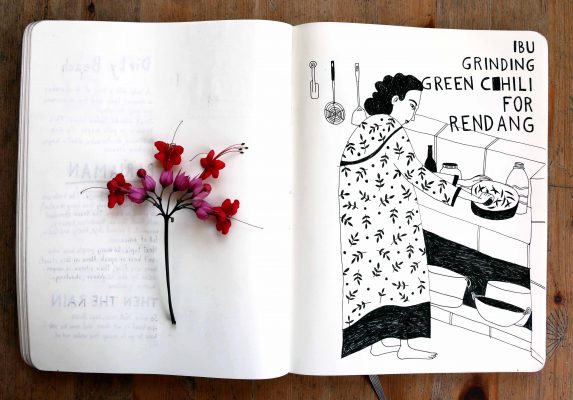
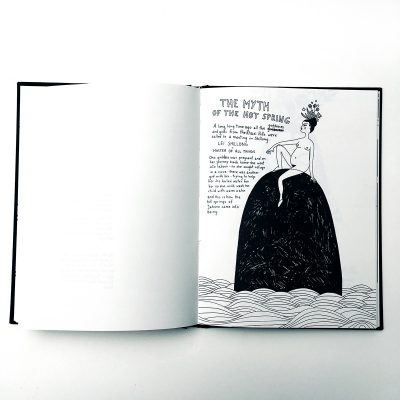
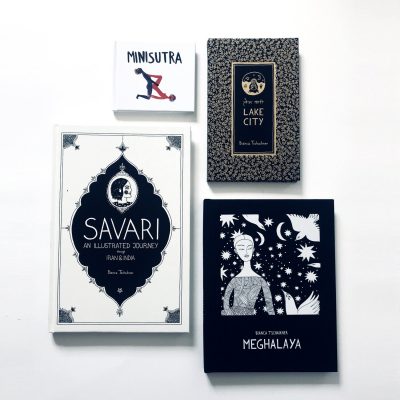
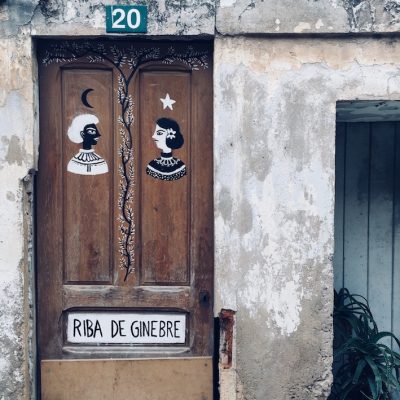
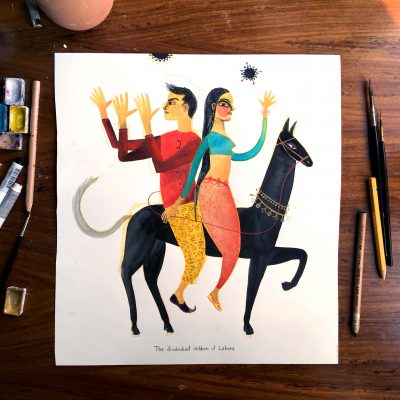
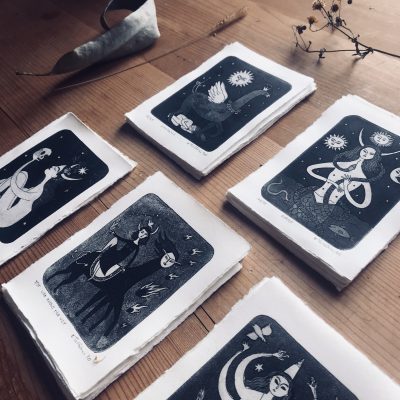
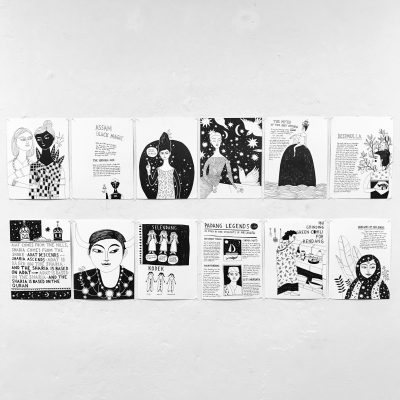
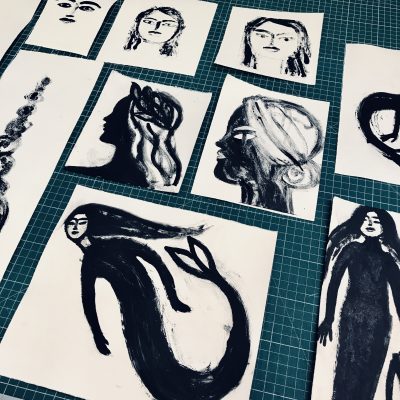
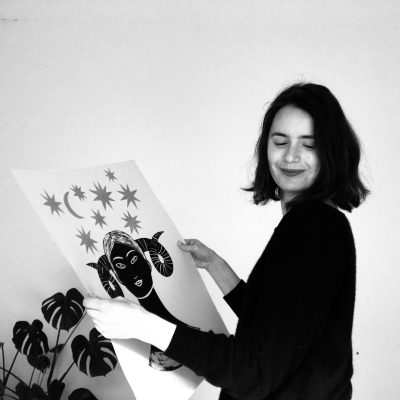
Do you like this artist?
If so, why not write a comment or share it to your social media. Thanks in advance if you can help in this way.